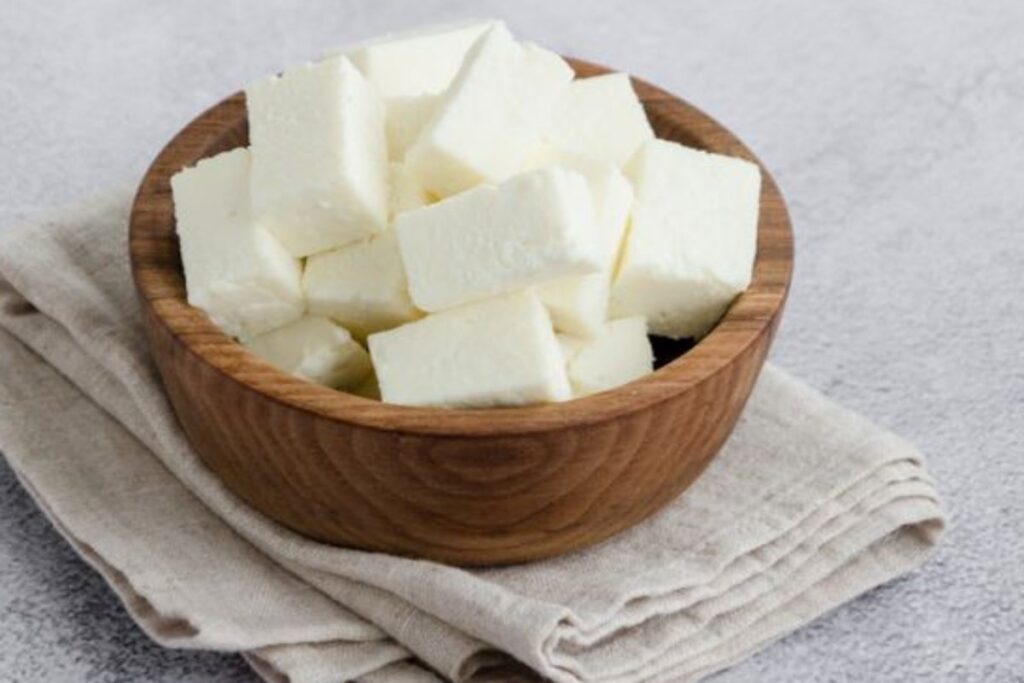Beyond its looks and taste, cheese is one of the most widely acknowledged food sources of protein. Apart from its edibility, it also has a way of uniting people, either through social media or a cheese festival. The worldwide cheese market is valued at $187 billion, set to increase by another $100 billion by 2032.
Cheese is a dairy product made from raw or pasteurized animal milk and processed in various ways depending on the type. It can also be made with goat and sheep milk, although cow milk is the most popular type. However, it is important to know that eating it in moderation ensures it remains beneficial to you.
Can Cheese Be Eaten Raw?
Despite their illicit reputations, raw milk and raw cheese are not inherently unhealthy. Most Americans do not have access to high-quality, unpasteurized dairy products. In fact, raw milk and cheese are superior to pasteurized versions in terms of flavor and microbial content. Casein and Whey are the two types of proteins found in milk.
The casein proteins separate into lumps when milk curdles because bacteria consume the lactose sugars in the milk and convert them to lactic acid. This also results in the whey proteins changing into that well-known watery white liquid and giving the milk a sour scent.
According to an FDA ban, all raw cheeses must undergo a 60-day ageing period at 35 degrees Fahrenheit or higher. After about sixty days, the salts and acids in raw form can kill harmful bacteria like E. coli.
ALSO READ: Cream Cheese Brands Under Recall at Major Retailers
However, the CDC advises avoiding it to lower listeria risk for those with weakened immune systems. This includes pregnant women, nursing mothers, children, the elderly, or those with chronic illnesses.
What Is the Slang Meaning of Cheese?
Cheeze is another spelling for cheese that is occasionally used as a colloquial word for cash. Since the mid-1800s, people have used the term “cheeze” to refer to money. The phrase gained popularity in the 1990s through its use in hip-hop songs like Jay-Z’s “Big Pimpin’,” featuring the line “We be big pimpin’, spendin’ cheese.”
Cheeze is a misspelling of cheese that has been around for a while, whether intentional or not. The term is typically linked with hip-hop culture, along with cheddar.
What Are the Benefits of Eating Cheese?
Cheese comes in several forms that guarantee health and wellness benefits, no matter your preference. According to the U.S. Department of Agriculture, it contains nutrients such as calcium, nitrogen, iron, vitamin B12, zinc, phosphorus, riboflavin, and magnesium.
POLL—Should Laws Be Enacted To Protect LGBTQ+ Individuals From Workplace Discrimination?
These nutrients promote bone and teeth health and boost immunity, nerve function, energy levels, and cognitive function.
According to Jen Messer, a nutrition consultant and registered dietitian, cheese is a rich in protein. “Cheese is also considered a high-quality source of protein, which can increase satiety, help stabilize blood sugars, and build, maintain, and repair muscle tissue,” Messer said.
According to Messer, some cheeses contain probiotics with “live” or “active” cultures, supporting gut health through fermentation. Additionally, Kristina Cooke, a licensed nutritionist, stated that it contains a lot of vitamin A, which is beneficial for eyesight and skin health.
What Is Cheese Used For?
Cheese can be enjoyed in a wide array of options, from melted to shredded to cubed to whole, depending on one’s preference. Now, while we are talking about cheese, there are several types found across the world, and they are all unique in their ways.
Cottage cheese, which originated in India, is one of the most commonly consumed types of cheese worldwide. Cottage cheese is made when whole milk is curdled and drained of water, thereby creating a high-nutrient, easily digestible, soft cheese.
WATCH: Map Reveals Parts of New York Will Be Underwater Amid Rising Ocean Waters
Mozzarella was first created in Southern Italy and was typically prepared from buffalo milk. However, its production has changed, as it is now made from cow and sheep milk. Because of its mild flavor and soft, chewy texture, mozzarella can be used to make several baking dishes, including pizza, lasagna, and pasta.
Also, Mozzarella is great on sandwiches and in certain salads when fresh. Feta cheese, which originated in Greece, is made from goat or sheep milk and has a somewhat creamy texture.
It is a common option for many when making salads because it complements all the components and has a somewhat acidic and salty flavor. The ideal pairing for feta is roasted peppers, olives, and almonds.
You Might Also Like:
Heartbreak for Mariah Carey As She Loses Mom and Sister in One Day
Kate Middleton Pays Heartwarming Visit to Scottish Church Amid Cancer Battle
Simple Clothes Hacks to Slash Your Clothing Budget
Daycare Owner Faces Charges After Children Accidentally Ingest Marijuana Edibles
Tesla Cybertruck $100K EVs Arrive Covered In Mud and Debris
